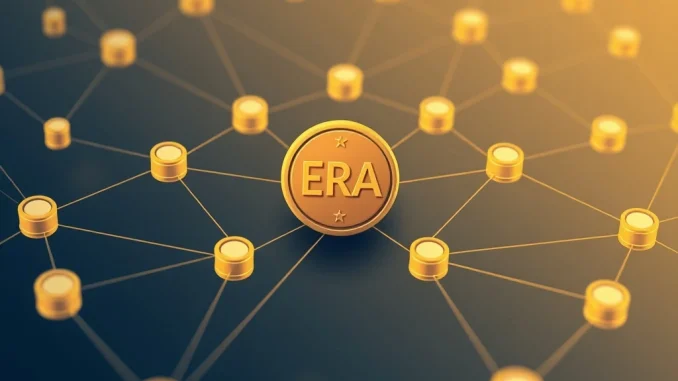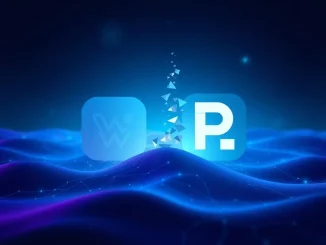
The world of blockchain technology is constantly evolving, seeking faster, cheaper, and more efficient ways to operate. Rollup-as-a-Service, or RaaS, providers like Caldera are at the forefront of this innovation, offering crucial infrastructure to build scalable Layer 2 solutions. Now, Caldera is taking a significant step forward with the debut of its native ERA token, a move set to reshape its ecosystem and empower its community.
Understanding Caldera and the RaaS Landscape
Before diving into the ERA token, let’s quickly touch upon what Caldera does. As a prominent RaaS provider, Caldera offers tools and services that make it easier for developers and projects to launch their own customized rollup chains. Think of it as a simplified way to deploy a dedicated blockchain layer that inherits security from a mainnet (like Ethereum) but processes transactions off-chain, drastically increasing speed and reducing costs. This service is vital for the mass adoption of decentralized applications.
The demand for efficient scaling solutions has fueled the growth of the RaaS sector. Projects across various domains, from gaming to DeFi, require throughput and transaction costs that mainnets often cannot provide. Caldera addresses this need by abstracting away much of the technical complexity involved in setting up and maintaining a rollup.
Introducing the ERA Token: Supply and Allocation Details
Caldera’s launch of the native ERA token marks a key milestone. According to reports, the token is designed with a total supply capped at 1 billion units. A notable aspect of the launch is the planned allocation strategy:
- Total Supply: 1,000,000,000 ERA
- Community & Ecosystem Allocation: 7% of the total supply
This 7% allocation towards community members and ecosystem participants signals an intent to decentralize control and incentivize early adoption and contribution to the Caldera network and the rollups it supports. Details regarding specific distribution mechanisms (airdrops, grants, etc.) are often announced closer to or during the token generation event.
ERA Token Utility: Powering the Caldera Ecosystem
A native token’s value is often derived from its utility within its ecosystem. The ERA token is poised to serve several core functions, integrating it deeply into the operation and governance of the Caldera platform and the rollups it facilitates. Key utilities include:
- Gas Fees: ERA is intended to be used to pay for transaction fees on rollups deployed via Caldera. This creates direct demand for the token as network activity grows.
- Staking: While specific staking mechanisms (like securing validators or providing liquidity) will be detailed, staking ERA tokens is expected to be a way for token holders to participate in network security or operations and potentially earn rewards. This utility aligns incentives between token holders and the health of the ecosystem.
- Governance: Holding ERA tokens will grant users the ability to participate in the decentralized blockchain governance of the Caldera protocol. This means token holders can propose and vote on key decisions regarding the platform’s future development, upgrades, and parameters.
These utilities are fundamental to building a decentralized and self-sustaining ecosystem around the Caldera RaaS offering.
Why This Crypto Token Launch Matters
The introduction of the ERA token is significant for several reasons:
- Decentralization: It moves the protocol towards community ownership and control through governance.
- Incentivization: It provides a mechanism to reward users, developers, and operators who contribute to the ecosystem’s growth and security.
- Ecosystem Growth: A native token can facilitate easier resource allocation, funding for projects building on Caldera, and attract more users and developers.
- Value Capture: As the demand for Caldera’s RaaS grows and more transactions occur on its supported rollups, the utility of the ERA token for gas and staking could increase, potentially reflecting the network’s success.
This launch isn’t just about creating a new digital asset; it’s about building a token-经济 that supports and accelerates the adoption of RaaS technology.
How Does Blockchain Governance Work with ERA?
Decentralized blockchain governance is a cornerstone of many modern crypto protocols. With the ERA token, holders will likely be able to:
- Submit Proposals: Propose changes to the Caldera protocol, such as fee structures, feature upgrades, or ecosystem fund allocation.
- Vote on Proposals: Use their staked or held ERA tokens to vote on submitted proposals. The weight of their vote typically correlates with the amount of tokens held or staked.
- Delegate Votes: Token holders who cannot actively participate might delegate their voting power to another trusted community member.
This system aims to make the development and direction of Caldera more transparent and community-driven, moving away from centralized control.
What’s Next for Caldera and ERA?
Following the initial debut, the focus will likely shift to the practical implementation of the token’s utility – enabling gas payments, setting up staking pools, and activating the governance module. The success of the ERA token will be closely tied to the continued adoption of Caldera’s RaaS platform and the overall growth of the Layer 2 ecosystem.
For community members and potential users, keeping an eye on official announcements regarding the 7% community allocation and opportunities to participate in staking and governance will be key actionable insights.
Conclusion
Caldera’s introduction of the native ERA token is a significant development in the RaaS space. By integrating utility for gas, staking, and blockchain governance, the token is positioned to become the central element of the Caldera ecosystem. This move not only aims to drive value and activity on the platform but also empowers the community, setting the stage for decentralized growth in the crucial field of blockchain scalability. The ERA token represents Caldera’s commitment to building a robust, community-governed infrastructure for the future of decentralized applications.



